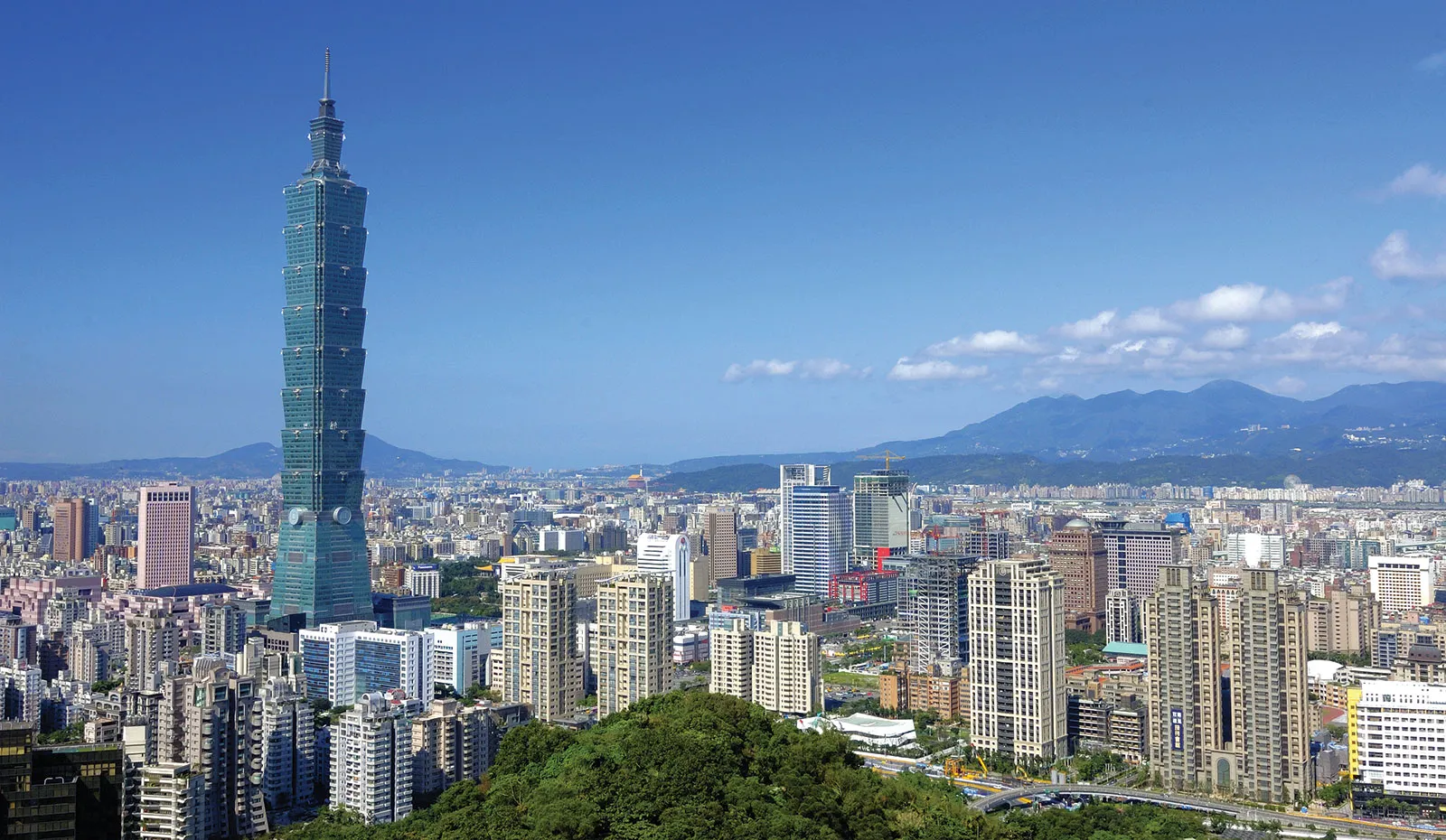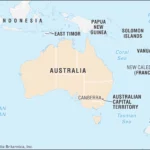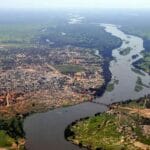Say hello to Taipei, the buzzing capital of Taiwan! Get ready for an adventure where ancient meets modern and the food is simply irresistible. From the towering Taipei 101 to tranquil temples hidden away in lush parks, Taipei is a melting pot of history, innovation, and flavor. Let’s explore and soak up the vibrant essence of this captivating metropolis!
Capital of Taiwan: Exploring Taipei
Taipei, the heart and soul of Taiwan, is a bustling city where old meets new in the most exciting way. Imagine towering skyscrapers juxtaposed with peaceful temples – this blend perfectly captures Taipei’s unique charm.
As Taiwan’s beating heart, Taipei sets the pace for everything from business and politics to art and culture. The city’s rich history is evident everywhere you look, from its early days to its time under different influences and its journey to becoming the vibrant hub it is today.
Taipei boasts impressive architecture, including the iconic Taipei 101, a skyscraper resembling a giant bamboo stalk. The Chiang Kai-shek Memorial Hall stands as a grand tribute to a key figure in Taiwan’s history. Art and history enthusiasts will marvel at the National Palace Museum, home to a treasure trove of Chinese artifacts.
But Taipei isn’t just about grand buildings and history. The city comes alive at night, offering a plethora of entertainment and dining options. Shoppers will be in paradise in Ximending, a district known for its lively vibe and diverse retail offerings. And when hunger strikes, prepare for a culinary adventure in Taipei’s famous night markets, where delicious smells, sizzling woks, and endless rows of food stalls await.
Beyond the urban landscape, it’s the people of Taipei that truly make it special. Known for their warm smiles and welcoming nature, they embody the values at the core of Taiwanese culture. Whether you’re a history enthusiast, a foodie on a mission, or simply seeking an exciting city break, Taipei has something for everyone.
Check This Out to see a list of all the capital cities in Canada.
What is the Real Capital of Taiwan?
The question of Taiwan’s real capital is a complex one, often sparking debate and differing opinions.
Taipei has served as the administrative center of Taiwan Province since 1887. In 1949, following the Chinese Civil War, it became the provisional capital of the Republic of China (ROC), the government currently governing Taiwan.
However, the People’s Republic of China (PRC), which governs mainland China, claims Nanjing as the real capital of Taiwan. This claim is not recognized by most other countries, who view Taipei as the seat of Taiwan’s functioning government.
Adding to the complexity, many countries have their embassies in Taipei, signifying their recognition of Taipei as the place to engage with Taiwan’s government.
While Taipei operates as the de facto capital, the question of the official capital remains entangled in political complexities.
For more information on other capitals, check out these links:
- Capital of Kazakhstan
- Capital of Madagascar
- What is the capital city of Australia?
- Capital of Cambodia
- What is the capital of Norway?
- Capital of Bhutan
- Capital of Albania
Is Taipei in Taiwan or China?
Taipei’s political status often leads to confusion. As the capital of Taiwan, an island nation off the coast of mainland China, Taipei is at the heart of a long-standing political debate.
China asserts that Taiwan is part of its territory, while Taiwan governs itself independently. This situation is akin to a family disagreement, where one member chooses to live independently while the other still considers them part of the family.
To navigate this delicate situation, Taiwan is sometimes referred to as “Chinese Taipei” in international contexts, such as the Olympics. This compromise aims to avoid political tensions and allow for participation from all parties.
Over 20 countries officially recognize Taiwan as an independent country. However, many others, including some powerful nations, adhere to the “One China” policy. This policy acknowledges China’s claim over Taiwan, even if they don’t necessarily agree with it.
Despite this ongoing political complexity, life in Taipei thrives. The city boasts a rich history, a thriving economy, and friendly people. The future of Taiwan’s political status remains a topic of discussion and negotiation, but Taipei continues to be a fascinating place with a unique story to tell.
What is Taiwan’s Old Capital City?
Before Taipei’s rise to prominence, Tainan held the title of Taiwan’s capital. Founded in 1620, Tainan served as the capital during the Dutch colonial era and remained a vital center under the later Qing dynasty.
Recognizing Taipei’s strategic location in the north, the Qing dynasty decided to move the provincial capital there in 1887.
While Taipei assumed the official title, Tainan continued to hold a special place as the former capital, a repository of cultural heritage, and the birthplace of many Taiwanese traditions.
Today, visiting Tainan offers a glimpse into Taiwan’s past. Ancient temples, well-preserved historical sites, and traditional snacks provide a tangible connection to bygone eras. Tainan serves as a reminder that every modern city has a story, and sometimes, understanding the present requires a journey back in time.
Is Taipei the Capital of Taiwan?
Yes, Taipei has been the capital of Taiwan since 1949. It serves as the island’s political, economic, and cultural hub, where major decisions are made, businesses flourish, and cultural trends emerge.
Taipei is a city of fascinating contrasts, where ancient temples stand tall alongside modern skyscrapers. The city’s history is palpable, from its early days as a settlement of the Ketagalan people to its transformation into a bustling port city in the 1600s. After a period of Japanese rule, Taipei emerged as the capital following the Chinese Civil War.
Today, Taipei pulsates with energy. Ancient traditions blend seamlessly with a modern, fast-paced vibe, creating a captivating atmosphere. The city’s night markets are legendary for their delectable street food, while architectural marvels like Taipei 101 and the Chiang Kai-shek Memorial Hall leave a lasting impression.
To delve deeper into Taipei’s rich history, visit the Taipei – Wikipedia page.
How did Formosa Become Taiwan?
The island nation we now know as Taiwan was once known as “Formosa” for centuries. The name change reflects a complex historical journey and evolving political landscape.
In the 1500s, Portuguese explorers, captivated by the island’s lush beauty, christened it “Formosa,” meaning “Beautiful Island.” The name stuck, becoming synonymous with this captivating corner of the world.
Over the centuries, Formosa saw its share of visitors and colonizers, including the Dutch and Spanish, leaving their mark on the island’s architecture, food, and language.
After World War II, Formosa, previously under Japanese rule, became part of the Republic of China. This pivotal moment marked a new chapter in the island’s story and coincided with the official name change to “Taiwan.”
While the exact reasons for the name change are debated among scholars, some believe it was a way to solidify the island’s new identity within the Republic of China. Others suggest it was a strategic move in the midst of geopolitical complexities.
Despite the official name change, the spirit of “Formosa” endures. Locals still use it with pride, referencing their heritage and the island’s natural splendor. “Formosa” captures the island’s essence, while “Taiwan” reflects its political reality – two sides of the same coin, each telling a part of the island’s fascinating story.
What is the Old Name of Taiwan?
For centuries, Taiwan was known as “Formosa,” a name bestowed upon it by awestruck Portuguese explorers in the 16th century. Struck by the island’s lush landscapes and captivating beauty, they dubbed it “Ilha Formosa,” meaning “Beautiful Island.”
The name “Formosa” persisted through various periods of colonization and cultural exchange, becoming deeply intertwined with the island’s identity.
However, after World War II, when Formosa was officially incorporated into the Republic of China, the name “Taiwan” gradually overshadowed its predecessor.
While “Taiwan” is now the official name, “Formosa” retains cultural significance, reminding us of the island’s adventurous past and the impact of different cultures on its identity. It serves as a metaphorical time capsule, preserving memories of explorers and echoing with their awe upon first encountering Taiwan’s shores.
Is the Capital of Taiwan Taipei True or False?
True. Taipei is indeed the official capital of Taiwan.
Taipei’s journey to becoming the capital began in the 1700s when it was known as Banka. The Qing dynasty recognized its potential and designated it as Taiwan’s provincial capital in 1887. After the Chinese Civil War, Taipei, already a well-established center, became the new home of the Republic of China (ROC) government in 1949, solidifying its status as the island’s capital.
Today, Taipei thrives as Taiwan’s economic and political powerhouse, boasting a dazzling skyline, efficient public transportation, a rich history, and a vibrant street life.
Here are some key takeaways:
- Taipei is the center stage for Taiwanese politics.
- The city is a history buff’s dream, with stories dating back centuries.
- Taipei is a global economic force to be reckoned with.
- Culture vultures will be captivated by Taipei’s art, music, and culinary delights.
To learn more, visit the Taipei – Wikipedia page.
Is Nanjing the Capital of Taiwan?
While Nanjing holds a significant place in Chinese history as the former capital of the Republic of China (from 1912 to 1949), it is not the current capital of Taiwan.
After the Chinese Civil War, Taipei assumed the role of provisional capital in 1949 and has served in that capacity ever since.
Nanjing, with its rich history as the former capital of powerful dynasties, remains the officially recognized capital by the Taiwanese government, despite not being under their control. This situation reflects the complex historical and political ties between Taiwan and mainland China.
In essence:
- Taipei is the current, functioning capital of Taiwan.
- Nanjing is the official capital according to the Taiwanese government, reflecting their historical claim.
- This unique situation underscores the complex relationship between Taiwan and mainland China.
What is the Difference Between Taipei and New Taipei?
Taipei and New Taipei, located adjacent to each other, are often confused, much like siblings with distinct personalities.
Taipei, the older sibling, embodies a fast-paced, urban energy. As the capital city, it pulsates with activity, boasting towering skyscrapers, vibrant night markets, and historical landmarks. Taipei seamlessly blends the old and new, representing Taiwan’s modern heart.
New Taipei, the younger sibling, offers a more relaxed atmosphere. Larger in area than Taipei, it surrounds its metropolitan counterpart, showcasing a diverse landscape of mountains, hills, plains, and coastline. Nature lovers will appreciate New Taipei’s hiking trails, scenic bike paths, and opportunities to connect with Taiwan’s natural beauty.
Here’s a closer look at their key differences:
| Feature | Taipei | New Taipei |
|---|---|---|
| Vibe | Fast-paced urban energy | More relaxed, mix of urban and natural areas |
| Size | Smaller, densely populated | Larger area, more spread out |
| Landscape | Predominantly urban | Diverse, with mountains, coast, and more |
| Government | Special municipality, Taiwan’s capital city | Special municipality, separate from Taipei |
| Economy | Major economic and financial hub | Strong in manufacturing and technology |
Both Taipei and New Taipei play crucial roles in Taiwan’s identity. Taipei drives the economy and showcases the island’s modernity, while New Taipei provides a breath of fresh air and highlights Taiwan’s natural splendor.
Some experts believe their relationship is constantly evolving. Taipei’s economic boom likely influences development in New Taipei, while New Taipei’s natural resources attract residents seeking respite from city life.
Ultimately, the best place to visit depends on your preferences. For a taste of modern city life, choose Taipei. For a blend of urban exploration and outdoor adventures, opt for New Taipei. Or, better yet, experience both!
Why Did Taipei Become the Capital of Taiwan?
Taipei’s rise to capital city was influenced by a combination of historical events and strategic advantages.
Even during Japanese rule in the early 20th century, Taipei was a prominent center for business and government. This head start positioned it as a natural choice when Taiwan became a province of China in 1886.
In 1949, after World War II, the Republic of China (ROC) government sought a new home after leaving mainland China. Taipei, with its established infrastructure and strategic location near mainland China, emerged as the ideal candidate.
Today, Taipei thrives as the heart of Taiwan, where politics, economy, and culture intersect. Its dazzling skyline, efficient public transportation, fascinating history, and vibrant street life continue to draw people from far and wide.
Here’s a simplified perspective:
- Taipei was well-prepared for the role, much like a model student who naturally becomes class president.
- The ROC’s decision to relocate to Taipei was akin to choosing a reliable friend during a challenging time.
It’s important to acknowledge that:
- Other cities in Taiwan might have also made suitable capitals, each with their own strengths and weaknesses, a topic often debated by historians.
- The story of Taipei’s rise is intertwined with the complex relationship between Taiwan and mainland China, a subject of ongoing global political discourse.
For a deeper dive, explore resources on the history of Taipei and Taiwan and delve into the different perspectives on Taiwan’s political status and its evolution.
Key Points About Taipei
- Capital of Taiwan: Taipei is the political, economic, cultural, and transportation center of Taiwan.
- Historic and Modern: The city seamlessly blends traditional temples with towering skyscrapers, reflecting its rich history and modern development.
- Architectural Landmarks: Notable buildings include Taipei 101, the Chiang Kai-shek Memorial Hall, and the National Palace Museum, renowned for its collection of Chinese artifacts.
- Vibrant Nightlife: Taipei features lively areas like Ximending for shopping and famous night markets with delectable street food.
- Welcoming People: The people of Taipei are known for their warm smiles and welcoming nature, reflecting the values of Taiwanese culture.
- Tourism Destination: The city offers a diverse range of attractions and activities, catering to history lovers, foodies, and those seeking an exciting city break.
- Senior at What Age: Benefits & Eligibility Guide - March 29, 2025
- Unlocking Senior Benefits: How Old is a Senior? Your Complete Guide - March 29, 2025
- Master Russian Politeness:A Guide to Saying Please - March 29, 2025
















